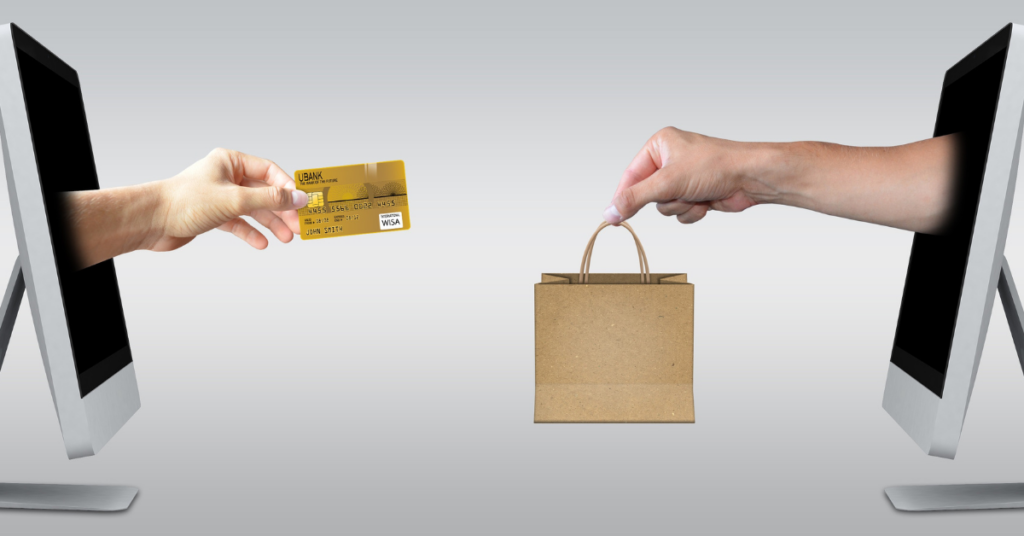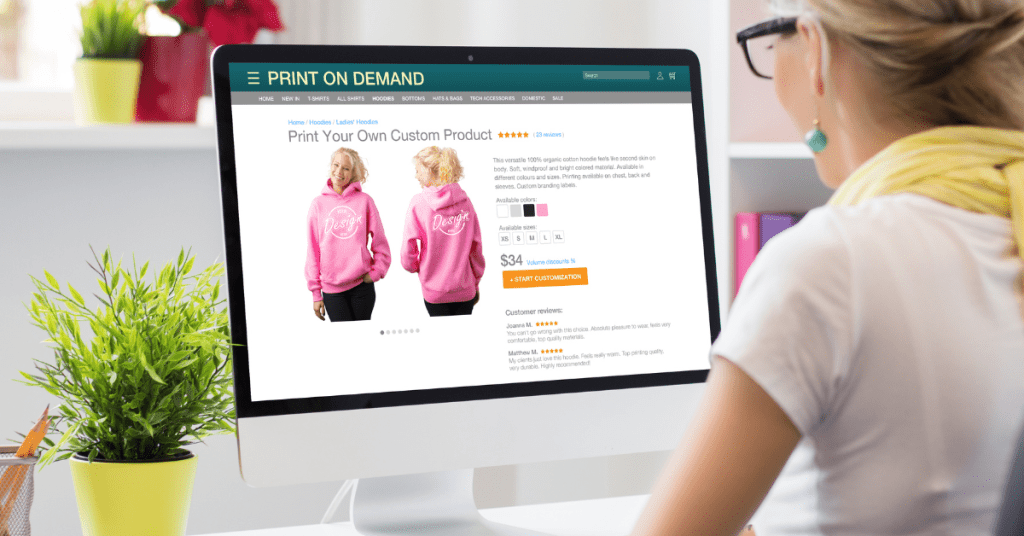The profitability of the print-on-demand (POD) model is rooted in the strategic targeting of niche markets and effective execution. POD presents notable advantages with its streamlined automation, extensive integration and personalisation options, and the promise of global reach within the ecommerce landscape. This model embodies modern efficiency and adaptability, offering entrepreneurs a dynamic platform to launch and expand their businesses.
However, achieving profitability in POD goes beyond its inherent potential. It demands entrepreneurial spirit, creativity in developing standout designs, and effective marketing strategies that resonate with the target audience. Success in this field hinges on a combination of innovation, quality, and strategic business management.
If you’re ready to start a POD business, support is available every step of the way. Entrepreneurs can harness the profitability and growth potential inherent in the print-on-demand business model. This can be done by focusing on niche market opportunities, delivering exceptional designs, and implementing smart marketing tactics. The key lies in dedication to innovation and a commitment to delivering value to customers through unique and personalized offerings within the POD ecosystem.
Is Print-on-Demand Worth It?
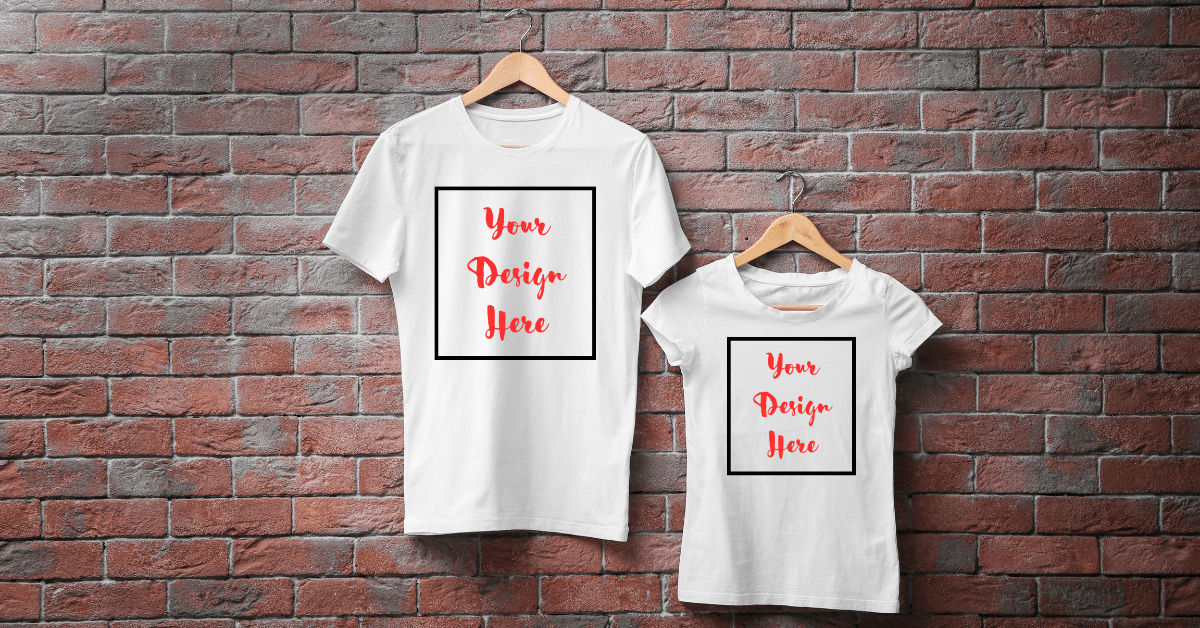
Print-on-Demand (POD) business model stands out as a thriving pathway for aspiring entrepreneurs. Projections indicate that by the year 2032, the POD market could escalate to a remarkable $59 billion. This showcases a substantial growth trajectory driven by several factors:
- Low Initial Investment: One of the primary draws of the POD model is its minimal upfront costs. Unlike traditional manufacturing setups, POD enables entrepreneurs to kickstart their businesses with modest financial commitments, focusing resources on essential operational aspects.
- Mitigated Inventory Risks: By eliminating the need for pre-produced stockpiles, POD significantly reduces inventory-related risks. This on-demand production approach ensures that products are manufactured only upon customer orders, effectively curtailing excess inventory and associated costs.
- White-label Capabilities: The ability to white-label products under the POD framework allows entrepreneurs to establish their brand identities seamlessly. Through the customization of packaging and branding elements, businesses can cultivate unique, recognizable offerings within the market.
- Tailored Product Customization: POD empowers businesses to cater to diverse consumer preferences through easy and efficient product customization. This flexibility not only enhances customer satisfaction but also enables entrepreneurs to swiftly adapt to evolving market demands.
Despite potential competitiveness within specific POD niches, the landscape perpetually invites innovation and differentiation. While some segments may be saturated, the evolving nature of consumer preferences continually uncovers opportunities for pioneering concepts and fresh perspectives. This inherent adaptability underscores the enduring appeal and growth potential of the POD ecosystem.
Print-on-demand Market Analysis
The print-on-demand (POD) industry is experiencing a remarkable ascent, underscored by substantial growth projections and expanding market opportunities. In 2024, the global POD market is estimated to be valued at $6.25 billion, with a notable annual growth rate of 25.6% anticipated from 2023 to 2032. This will propel the market to a staggering $59 billion by 2032. This trajectory signals a burgeoning industry that holds immense promise for entrepreneurs, artists, and influencers alike.
Notably, the home decor segment within the POD space has witnessed a substantial surge in demand for personalized products such as custom pillows, wall art, and kitchenware in 2024.
The broader home decor market, estimated at $128.69 billion in 2024, is anticipated to register the highest growth rate among custom product sectors within the POD domain, with a compound annual growth rate (CAGR) of 27.7% from 2022 to 2032. This trend reflects a growing consumer preference for personalized home decor items. It aligns seamlessly with the on-demand production capabilities offered by POD businesses.
On the other hand, interest in POD has experienced exponential growth over the past five years. It had reached unprecedented levels during the pandemic and continuing to escalate. The proliferation of social media influencer content, coupled with the surge in online shopping and advancements in technology, has also catalyzed this trend.
The digital marketplace has democratized online entrepreneurship. It provides a platform for creators and budding entrepreneurs to design and market customized products without the constraints of traditional business or design expertise. In 2023, interest in POD reached historic highs, and this enthusiasm is expected to further intensify in 2024. It underscores the enduring appeal and viability of the POD industry in today’s digital landscape.
Reasons to Start a Print-on-Demand Business Now
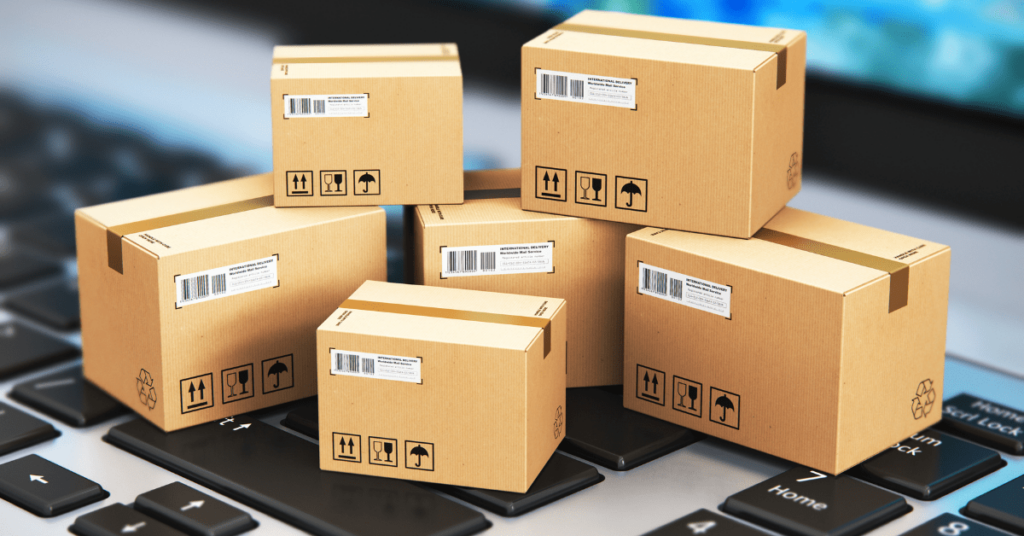
Embarking on a print-on-demand (POD) venture presents a strategic opportunity amidst a landscape characterized by a growing demand for unique products, technological advancements, and a vast online consumer base. The accessibility of this sector has never been more apparent. You can now establish thriving POD businesses with minimal resources. You can leverage on basic tools such as internet access, design software proficiency, and an online storefront integrated with a print-on-demand platform.
Despite concerns about market saturation, the inherent benefits of the POD dropshipping model continue to resonate strongly with entrepreneurs seeking accessible avenues for business growth and innovation.
This convergence of affordability, efficiency, and creative freedom makes POD an enticing proposition in the realm of contemporary e-commerce and product customization.
The advantages of adopting the print-on-demand model are multifaceted and compelling:
1. Low Investment or Startup Cost
The print-on-demand (POD) model indeed offers a low-risk pathway for entrepreneurs to enter the market with minimal upfront investment. Platforms like Printify provide a straightforward onboarding process, allowing individuals to register at no cost. Under this model, production and fulfilment only occur upon customer orders. With sellers covering the production costs, it eliminates the need for inventory management or manufacturing overheads.
In terms of opening an online store, the cost varies based on the chosen ecommerce platform or marketplace. Many platforms offer affordable subscription plans, typically averaging around $30 per month. This provides you with a dedicated online space to showcase and sell your POD products.
For those with limited technical expertise, marketplaces like Etsy offer an accessible alternative. Etsy charges a modest transaction fee of 6.5% per sale and a nominal listing fee of $0.20 per item, foregoing the need for a subscription fee. This user-friendly approach empowers entrepreneurs to launch their POD businesses efficiently without incurring hefty overhead costs.
By alleviating concerns associated with traditional manufacturing expenses and inventory management, the POD model emerges as an attractive option for aspiring entrepreneurs keen on entering the market with a lean and cost-effective business framework. This accessibility fosters innovation and entrepreneurship within the rapidly evolving landscape of online commerce and personalized product offerings.
2. No Inventory Holding or Processing
Print-on-demand (POD) offers a versatile platform for expanding your product catalogue and exploring diverse design concepts. With POD, the process is straightforward. You can select a product from a range of options, customize it to align with your brand aesthetic, and seamlessly integrate it into your online store for effective marketing.
One of the key advantages of POD is its flexibility in managing product performance. If a particular item doesn’t meet sales expectations, you can swiftly discontinue it with just a few clicks. This agility also allows you to continually refine your product offerings based on real-time market feedback, optimizing your catalogue for maximum customer appeal.

Moreover, POD eliminates the need for bulk ordering and the associated challenges of inventory management and warehousing costs. Unlike traditional manufacturing models, where large quantities of inventory must be stored and managed, POD operates on a print-as-you-go basis. This means products are produced only when ordered, reducing financial risks and ensuring that you maintain a lean and efficient supply chain.
By leveraging POD, you gain the freedom to experiment with new product ideas and design variations without the constraints of inventory overhead. This flexibility empowers you to respond quickly to market trends and customer preferences, ultimately enhancing your business’s agility and competitiveness in the dynamic e-commerce landscape.
3. Simplified Order Fulfilment Process
Print-on-demand is notable for its cost-efficiency and time-saving capabilities. When a customer purchases your online store, the order is seamlessly transmitted to Printify.
This allows us to manage the entire process—from printing and packaging to shipping—without requiring you to handle each order manually. As a result, you have more time to focus on design and product marketing, crucial elements for your business’s success. By dedicating attention to these areas, creative entrepreneurs with small companies can achieve substantial advancement.
4. Scalability
The inherent scalability of a print-on-demand (POD) store empowers business owners to venture into numerous niche markets, spanning apparel, home decor, accessories, pet products, and beyond. This diversification presents exciting opportunities for expanding your enterprise.
Currently, there are over 300 premium-quality custom products, providing ample room for creativity and customization. Explore a spectrum of options, including all-over print, direct-to-garment, UV printing, and embroidery, to bring your unique designs to life.
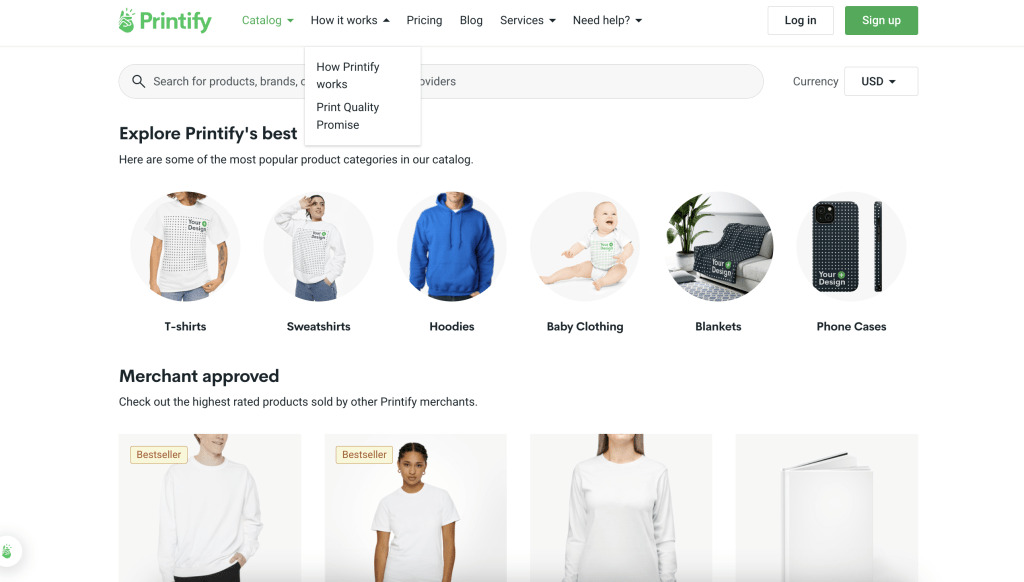
In the fast-paced world of fashion and design, trends evolve rapidly. With POD, it’s effortless to capitalize on these trends. By adapting to ever-changing market demands, you can ensure your offerings remain current and appealing to your audience.
Besides, staying relevant is key. You need to incorporate popular designs or create products tailored to specific events and holidays to align with your customers’ interests. This strategic approach not only enhances customer engagement but also fuels the growth of your business.
Moreover, seasonal or holiday-themed products can capitalize on peak shopping periods, attracting new customers and expanding your reach. Embrace these opportunities to further solidify your brand presence and drive sustained success in the competitive e-commerce landscape.
5. Design with Mockup Tool
The ease and accessibility of designing custom products have become key attractions of print-on-demand services.
Thanks to plenty of user-friendly design tools and software, creating attractive and marketable designs has never been easier. This accessibility allows entrepreneurs to swiftly bring their ideas to life and test them in the market without requiring significant investment or specialized skills.
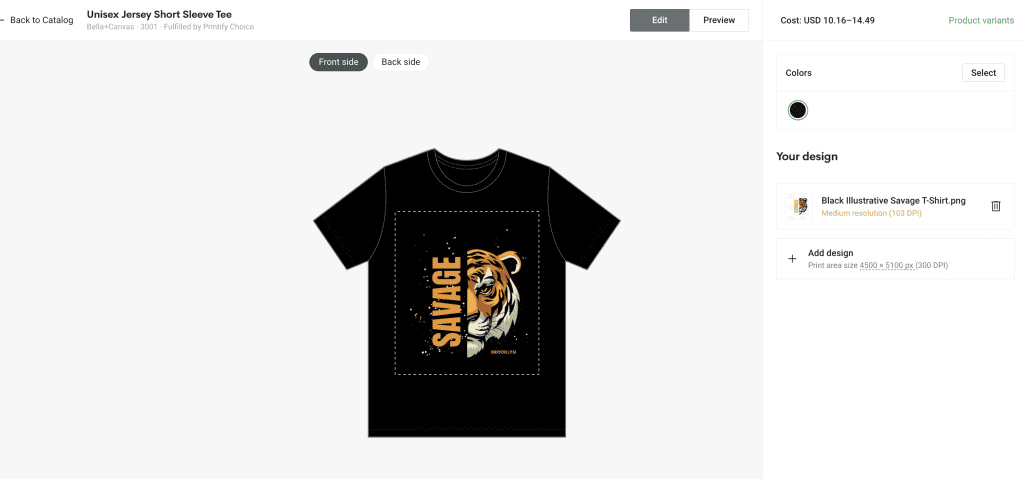
Intuitive tools like Mockup Generator and Canva feature drag-and-drop interfaces and ready-made templates. This streamlines the design process for both beginners and professionals. Besides, these tools empower users to quickly modify designs to cater to different audiences or respond promptly to evolving trends.
This accessibility enables entrepreneurs to produce a diverse array of products with minimal hassle, spanning from custom t-shirts and hoodies to posters and phone cases. With such tools at their disposal, entrepreneurs can explore endless creative possibilities and capitalize on emerging opportunities in the dynamic world of e-commerce.
6. Test Multiple Products Fast
The ecommerce landscape is constantly evolving. Hence, launching an online business can entail inherent risks. However, with print-on-demand (POD), these risks are mitigated due to the minimal startup investments required.
The POD model provides a low-risk environment for testing new designs and products swiftly. If an idea doesn’t yield the desired results, you can easily pivot and iterate without incurring losses from excess inventory. This flexibility is invaluable for entrepreneurs looking to refine their offerings and optimize their business strategies.
Furthermore, POD empowers you to experiment with various niches and trends to gauge resonance with your audience. This iterative approach makes it simpler to adapt and identify successful products, fostering agility and responsiveness within your online business.
In essence, POD offers a strategic advantage by minimizing financial risks and facilitating iterative experimentation, ultimately enhancing your ability to navigate the dynamic ecommerce landscape effectively.
7. Brand Development
Print-on-demand (POD) offers a powerful platform for cultivating and expressing a brand’s distinctive identity.
Printify operates as a white-label company. It enables you to incorporate your branding on product labels and have items shipped under your brand name. This level of customization allows brands to create products that authentically embody their vision and values. In today’s fiercely competitive market, where uniqueness and brand identity are pivotal for attracting and retaining customers, this personalized approach is essential.

Beyond merely selling products, building a brand entails prioritizing customer satisfaction to cultivate loyalty and positive word-of-mouth. In addition, Printify’s unwavering commitment to quality production and exceptional customer service plays a crucial role in safeguarding the seller’s reputation. Customers can then rely on receiving premium-quality custom products promptly, reinforcing trust and bolstering brand integrity.
In essence, POD catalyzes brand differentiation and customer engagement by empowering brands to infuse their unique identity into every facet of their offerings. By delivering personalized experiences and upholding uncompromising quality standards, POD facilitates the creation of enduring brand connections in the ever-evolving ecommerce landscape.
Print-on-demand Challenges
While print-on-demand (POD) offers significant advantages, entrepreneurs must navigate several obstacles, including fierce competition, higher costs per product, and the imperative to identify a profitable niche.
Huge Competition
The POD market is saturated with competitors, ranging from new sellers to established players all vying for attention. Simply having a great product is not enough to guarantee success. Besides, you must establish a unique selling proposition (USP) to differentiate yourself effectively.
Besides, you need to conduct a thorough analysis of competitors’ pricing strategies, branding approaches, marketing tactics, and customer perceptions. Understanding what competitors offer and how they are perceived by customers provides valuable insights for identifying areas where innovation or improvement can secure a distinctive position within the competitive POD landscape.
To thrive amidst competition, you should focus on leveraging your unique strengths, whether through innovative product designs, exceptional customer service, or niche targeting, to carve out a meaningful market presence.
Higher Product Cost
A critical consideration in print-on-demand (POD) is managing the higher cost per item while maintaining healthy profit margins.
The higher cost per item in POD refers to the unit cost of producing each product on demand, which is typically more expensive compared to traditional bulk manufacturing methods. This is because POD operates on a model where products are manufactured only after each sale, eliminating the need for large pre-produced inventories.
For sellers in the POD space, it’s essential to carefully balance pricing strategies to ensure sustainable profit margins. While POD offers the flexibility to set custom prices based on factors like effort, target audience, and competitor offerings, pricing too low may not cover costs or yield desired profits. Conversely, pricing too high can deter potential customers and decrease sales volume.
Therefore, careful attention to pricing strategies and a deep understanding of profit dynamics within your business are crucial. Factors such as production costs, shipping fees, platform commissions, and desired profit margins must be considered when setting product prices. Regularly reviewing and adjusting pricing strategies based on market feedback and performance metrics is key to optimising profitability in the POD business.
Market saturation
The growing popularity of print-on-demand (POD) has raised concerns about market saturation. As more sellers join platforms offering these services, it intensifies competition and makes it challenging for individual stores to distinguish themselves.
This saturation can result in a crowded marketplace where only the most unique or high-quality products capture customer attention. Sellers may find themselves in a fierce battle for visibility. There’s a significant investment required in marketing and brand differentiation to stand out amidst the noise.
Another consequence of market saturation is the pressure it exerts on pricing and profit margins. With numerous sellers offering similar products, there’s a temptation to engage in price competition, potentially leading to a “race to the bottom” scenario where profit margins dwindle. You must strike a delicate balance between competitive pricing and maintaining healthy profit margins. This often requires innovative strategies to add value without inflating costs.
To navigate these challenges effectively, you should focus on cultivating a strong brand identity, emphasizing product quality, and leveraging unique selling propositions (USPs) to differentiate yourself in the market. Additionally, implementing targeted marketing campaigns and exploring creative value-added services can help sustain profitability and resilience in a competitive POD landscape. By adopting a strategic approach and continuously refining their offerings, you can also navigate market saturation and carve out a sustainable niche within the evolving ecommerce ecosystem successfully.
Uncontrollable Order Processing & Shipping Time
A significant challenge in print-on-demand (POD) is meeting customer expectations, particularly about shipping times. Unlike traditional retail where products are readily available from existing inventory, POD items are produced and fulfilled after the customer places an order, which can extend the time to shipment. Delivery timelines can vary widely based on the distance between the printing facility and the customer’s location.
To address this challenge, transparency is key. It’s essential to communicate the expected timelines for production and delivery right from the outset of the customer’s shopping experience.
Besides, you should establish realistic expectations early on to help cultivate customer understanding and patience regarding the time required to print, embroider, pack, and ship custom products. By proactively managing expectations and providing transparent updates throughout the order fulfilment process, sellers can enhance customer satisfaction and mitigate potential frustrations associated with longer shipping times.
Additionally, you may offer expedited shipping options or leverage multiple production facilities strategically can help minimize delivery delays and further enhance the overall customer experience. Ultimately, effective communication and transparency play a crucial role in managing customer expectations and building trust in the POD business model.
How to Start and Grow A Successful Print-on-Demand Business

To start and grow a successful POD business, you must have a proven strategy and guide.
Product selection and niche marketing – Print-on-Demand
To succeed in the print-on-demand (POD) space requires target market research and strategic product selection tailored to a profitable niche.
Firstly, it’s crucial to conduct comprehensive target audience research to understand their preferences and behaviours. By identifying specific demographics, interests, and buying patterns, you can then tailor your offerings to meet specific market needs.
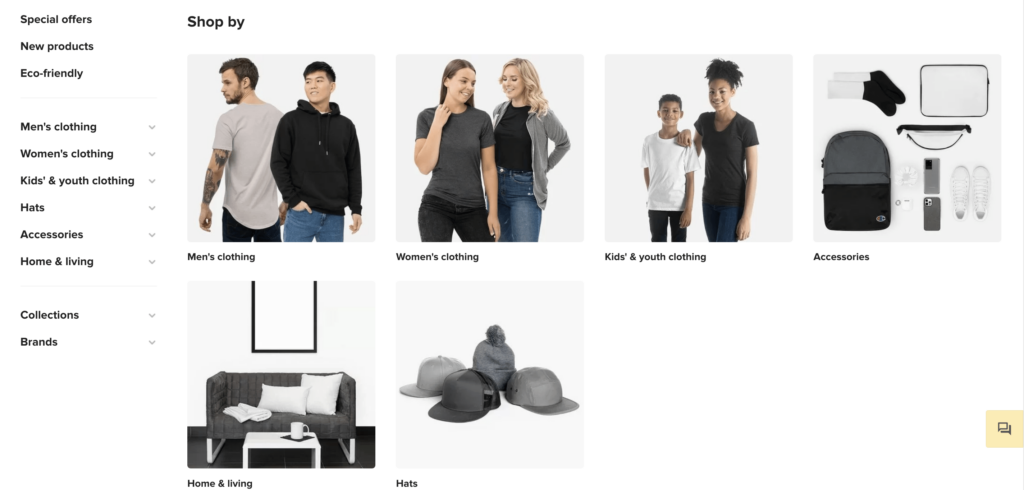
Once a viable niche is identified, selecting the right products becomes important. You can then explore trending products or bestsellers within the POD industry. This can provide valuable insights into what resonates with customers and has proven success in the market.
Tools like Google Trends offer valuable data on market trends. It enables you to evaluate the potential of different niches through search engine optimization (SEO) insights. This information can guide decisions on product selection and marketing strategies, even in a competitive market.
Design and branding – Print-on-Demand
To achieve success in print-on-demand (POD), it’s essential to also adopt emotionally resonant design strategies and maintain consistency in reflecting your brand’s identity across all products.
Firstly, prioritize emotionally resonant design. You need to create designs that evoke feelings, tell stories, or resonate with specific audiences. Besides, emotionally impactful designs are also important as they have a higher chance of connecting with customers on a deeper level, fostering loyalty and repeat purchases.
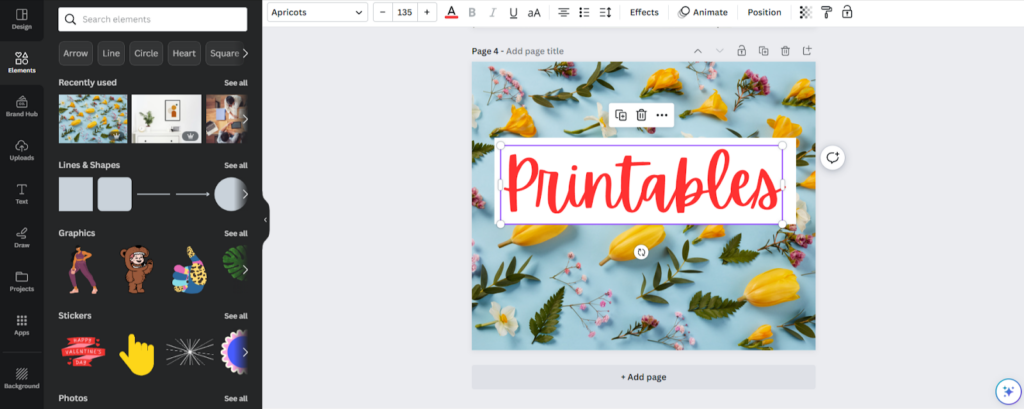
Besides, consistency in branding is key. Develop a strong and unified brand identity that communicates your values, aesthetics, and voice clearly across all touchpoints. From product designs to packaging and marketing materials. A cohesive brand presence helps build trust and recognition among customers.
On the other hand, you need to also Invest strategically in branding and marketing. Allocate resources to promote your print-on-demand offerings effectively. In addition, utilize social media, content marketing, influencer partnerships, and other channels to amplify your brand message and reach your target audience.
Finally, focus on creating high-quality designs. Quality is paramount in driving repeat purchases and customer satisfaction. You can also collaborate with reliable print-on-demand suppliers that consistently deliver excellent results. Partnering with reputable suppliers ensures that your designs are reproduced accurately and with superior craftsmanship.
Marketing strategies – Print-on-Demand
Effective marketing strategies are essential for the success of print-on-demand (POD) businesses. A robust marketing strategy begins with defining clear goals and vision for your brand’s campaigns. It aligns individual marketing initiatives with broader business objectives. This can ensure that every effort contributes cohesively to your overall brand mission and growth targets.
Besides, a well-planned marketing strategy enables efficient allocation of resources and budget, optimizing the impact of your marketing investments. It provides a roadmap for integrating various marketing channels and tactics, such as social media marketing, email campaigns, content marketing, and more, into a unified approach that consistently drives toward desired outcomes.
By integrating a strategic marketing plan, POD businesses can ensure consistency, relevance, and effectiveness in their marketing efforts. This holistic approach maximizes the impact of each campaign and strengthens brand visibility, engagement, and ultimately, business success in the competitive landscape of e-commerce.
Customer service – Print-on-Demand
Retaining customers is a fundamental strategy for print-on-demand (POD) businesses. It offers numerous benefits compared to acquiring new customers. Besides, repeat customers tend to spend more over time and often become brand advocates. This can then amplify your brand’s reach through word-of-mouth—a powerful asset in today’s competitive digital marketplace.
A stable base of loyal customers provides predictable revenue streams. This can also enable better planning and investment in business growth. Moreover, focusing on customer retention reduces operational costs and enhances your brand’s reputation, fostering long-term success.
To optimize customer retention in your POD business:
- Firstly, choose a POD provider that offers premium-quality products and reliable fulfilment services. Consistent product quality enhances customer satisfaction and encourages repeat purchases.
- Secondly, maintain proactive communication with customers through newsletters, social media updates, and personalized outreach. Keeping your brand top of mind without being overwhelming reinforces customer engagement.
- Thirdly, ensure accessible customer support and respond promptly to inquiries or concerns. Building trust through responsive service strengthens customer relationships.
- Then, reward repeat purchases with incentives like discounts, exclusive offers, or loyalty points. Encouraging continued business with perks fosters customer loyalty.
- Finally, solicit and value customer feedback regularly to improve your offerings. Actively listening to customer opinions demonstrates that their input matters and helps refine your products and services.
Superior customer service is key to elevating satisfaction, increasing repeat sales, and cultivating enthusiastic brand supporters.
Taking the print-on-demand plunge
The profitability of the print-on-demand (POD) model hinges on strategic targeting of niche markets and effective execution.
POD offers significant advantages through its streamlined automation, extensive integration and personalisation options, and the potential for global reach. It embodies modern efficiency and adaptability in the ecommerce landscape.
However, the key to unlocking the profitability of the POD model lies beyond its inherent potential. It requires entrepreneurial spirit, creativity in crafting standout designs, and astute deployment of effective marketing strategies that resonate with your target audience.
If you’re prepared to embrace the challenge and leverage the strengths of the POD model, we’re here to support you every step of the way. Success in POD ultimately depends on your commitment to innovation, quality, and strategic business management.
By capitalizing on niche markets, delivering exceptional designs, and implementing savvy marketing tactics, entrepreneurs can realize the profitability and growth potential of the print-on-demand business model.



